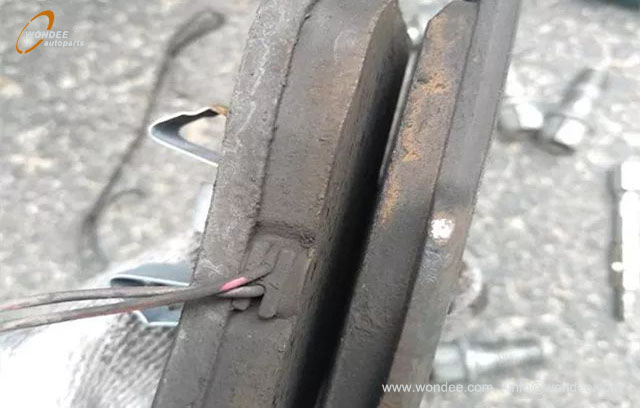Views: 0 Author: Wondee Autoparts Publish Time: 2024-02-08 Origin: Wondee Autoparts








As long as the brake pads are replaced, both sides should be replaced simultaneously, not just one side. Generally, the degree of wear on both sides is roughly the same, with a slight difference, but this difference is not too significant. Under normal circumstances, there will be no situation where one side is worn to its limit and the other side is still very thick. Replacing brake pads at a 4S dealership can be considered a relatively frequent task. Vehicles are replaced almost every day, and sometimes this phenomenon can be observed. The wear on both sides of the brake pads is inconsistent, with a significant difference. It can be seen at a glance that one side is worn to its limit, while the other side is still one-third thick. This situation is abnormal and requires maintenance and inspection.


The thickness of brake pad wear is inconsistent, and most car owners themselves are not aware of it. The repair technician said that the brake pads should be replaced, and the car owner agreed to replace them. After replacing them, they drove away. Responsible maintenance technicians will investigate the cause and repair it. Technicians with weak sense of responsibility or lack of experience can replace the new film and complete the task, especially some interns who are unaware of the abnormality. So it is recommended that car owners take a look at the brake pads themselves after replacing them. Firstly, check if the thickness really needs to be replaced. Secondly, check if the wear on both sides is consistent to determine if there is a problem with the brake system. When checking the thickness of the brake pads, both sides should be checked, and it is best to also check the inner and outer pads on the same side.



The majority of reasons for inconsistent wear on both sides are due to the jamming of the guide pin of the brake cylinder. When braking, the brake cylinder moves along the guide pin. If the guide pin lacks lubricating grease and does not move smoothly, it will result in poor return of the slave pump. When we step on the brake, the brake oil pressure is high, pushing the piston outward, allowing the cylinder to move normally and the brakes to function properly. But when the brake is released, there is not much force to push the piston back, it's just that the brake pads no longer apply force, and there is no braking. If the slave cylinder does not move smoothly, even if the brake is released, the braking force may not be released for a short period of time and will continue for a few seconds, but the braking force is relatively weak and cannot be felt while driving. Over time, if you brake more frequently, the brake pads on this side will wear out more.


When replacing the brake pads, this situation can be solved by simply lubricating the guide pin. It is best to clean all the grease and dirt on it, and reapply new lubricating grease to completely solve the problem. This step can be done by replacing the brake pads, which is actually something that maintenance workers should do. Some new brake pads come with a pack of lubricating grease. In addition to the jamming of the guide pin, there is also a situation where the piston of the slave pump is stuck. The principle is the same as the locking of the guide pin, but it is also difficult to return after coming out, and it is constantly forcefully applied to the brake pads, causing severe wear and tear on the brake pads. Previously, I also encountered a situation where the pump was completely stuck, and even if I stepped on the brake, it wouldn't come out, which required replacing the slave cylinder.


If it is not completely stuck, don't rush to replace it first. It may not be damaged, but it may also be due to a lack of lubrication. You can use a tool to push the piston to the innermost position, then lightly press the brake to step it out, then push it in, and repeat the operation three or four times. The purpose of doing this is to lubricate the entire cylinder channel with brake oil, and the piston will also move significantly. When you feel that the pushing and stepping are both smooth, it indicates that the slave pump has returned to normal. If it is still not smooth, you also need to replace the slave pump.
From: WONDEE Autoparts
2024-2-8
How Semi-Trucks Changed Freight Forever: A Century of Innovation
Will airbags open normally in the event of a collision when driving without wearing seat belts?
How do you know if the car shock absorber is broken? Must it be replaced in pairs?
It's best to throw away these car supplies as soon as possible
Can you use child locks on cars? How many do you know about the hidden functions on cars?
Do you know how to turn left in the waiting area? When should I enter?